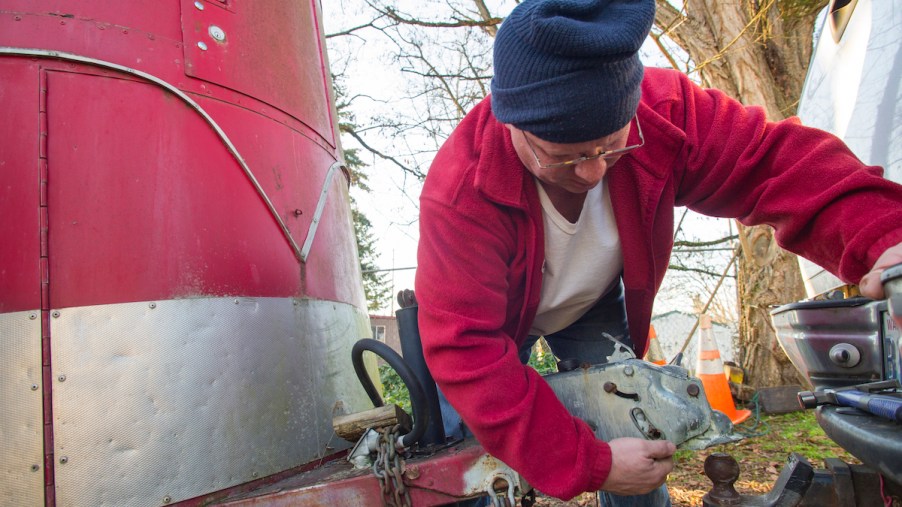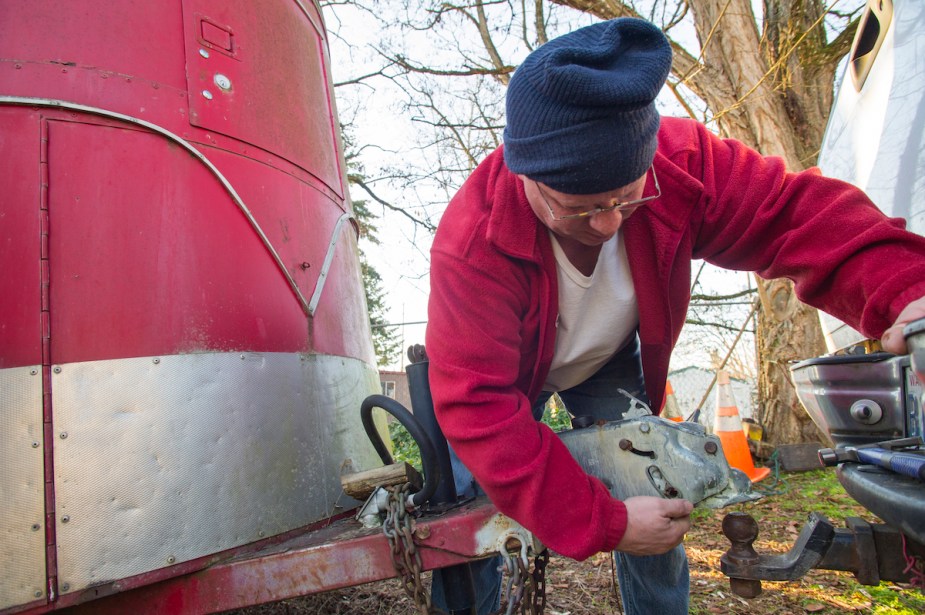
How Often Should You Reapply Grease to a Trailer Hitch?
When doing regular truck and trailer maintenance, it’s easy to remember things like checking the oil, brake pads, and tire pressure. However, it is also easy to overlook other necessary maintenance, like greasing the trailer hitch. Does a trailer hitch really need to be greased? If so, how often should grease be reapplied?
Pros and cons of greased trailer hitches

There are few, if any, arguments against greasing a trailer hitch. Without some lubrication, an in-use hitch is a world of metal-on-metal friction that generates heat, causes noise, and lessens the working life of the hitch.
An unused hitch that isn’t greased will eventually rust. According to RV Blogger, covering your shiny new hitch ball may delay corrosion, but the best way to keep a trailer hitch in optimal shape is to grease it now and again.
Once a trailer hitch ball is covered with rust, it’s too late to save it. Trying to grease a rusted hitch is an exercise in futility, and using such a hitch is downright dangerous. If your hitch is beyond hope, it’s necessary to replace it. Be sure to find a compatible hitch ball and hitch mount and maintain them properly from the start.
The only downside of greasing your hitch is that grease attracts and holds road grit, gravel, and dead bugs. It can get messy, especially if you accidentally rub against it with your clothing. However, grease is a lubricant, but it’s not the only one.
According to Camp Happy RV, there are less messy grease alternatives that lubricate trailer hitches just fine. They recommend using a dry graphite lube on the hitch. Other alternatives include rubbing the hitch with a solid candle or wiping the hitch with motor oil.
How (and how often) to grease a trailer hitch
As a rule of thumb, grease your hitch once in the summer and the fall. If you plan to take a road trip, lube your hitch before you go, too. Start by wiping off the previous layer of grease to reveal the hitch and ball surface.
If you’re greasing a non-chrome hitch for the first time and notice a bit of rust, use sandpaper to remove the rust before applying a liberal coating of grease. For superior protection, use specially made white hitch ball grease made with lithium that helps the lubricant stay in place.
A brief history of hitches
The first hitch-like device to aid in towing was probably a wooden yoke that attached a wagon to an ox. Leather collars enabling horses to pull carts are another early sort of hitch. Once engine-powered vehicles were invented, trailer hitches soon followed.
Rudimentary trailer hitches made by blacksmiths consisted of iron bars that connected a trailer to an automobile with nuts and bolts. In 1917, aviator Glenn Curtiss patented a wheel-based hitch that attached a trailer with a cushion of air. The military modified this design to replace the tire with a flat, heavy steel plate, the likes of which remain in use in semi-trucks. A smaller version of this flat plate hitch can be found on fifth wheels today.
Gooseneck hitches mounted above the rear axle in a truck bed are used for towing extremely heavy loads. Similar to ball-and-receiver hitches, gooseneck hitches should be greased on the same timeline as other trailer hitches.
Ball-and-receiver hitches have been around for about a century. Conceived in Michigan in the late 1920s, ball hitches tend to be more secure and flexible than their tang and bolt predecessors, says RV Travel. Even back then, towing hitches needed to be lubricated.


